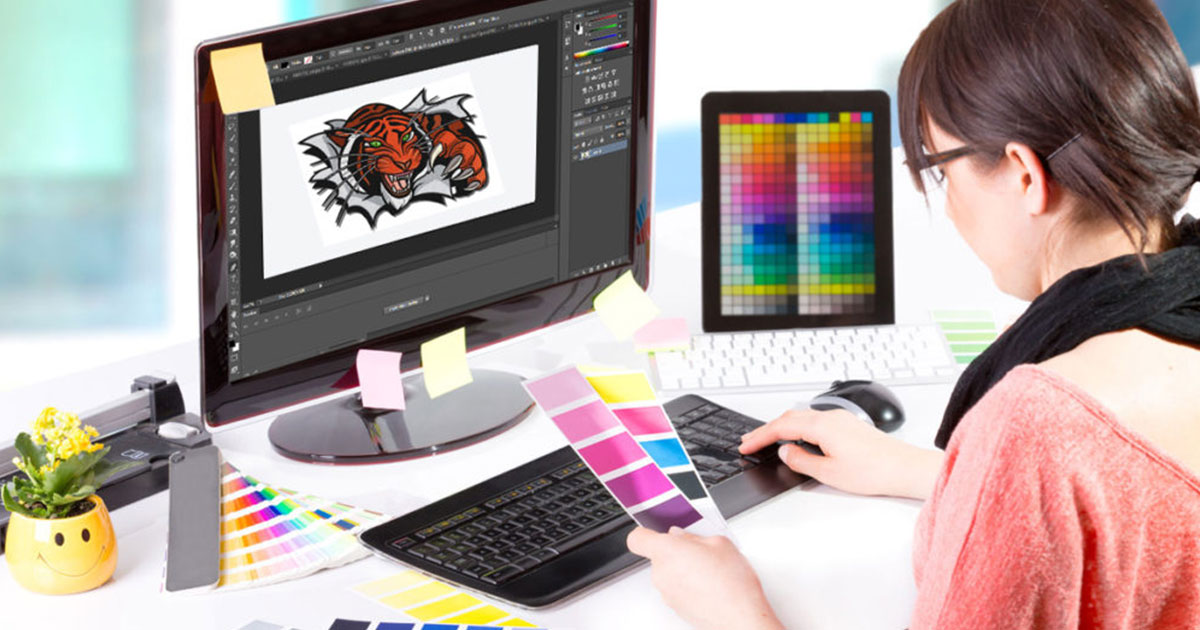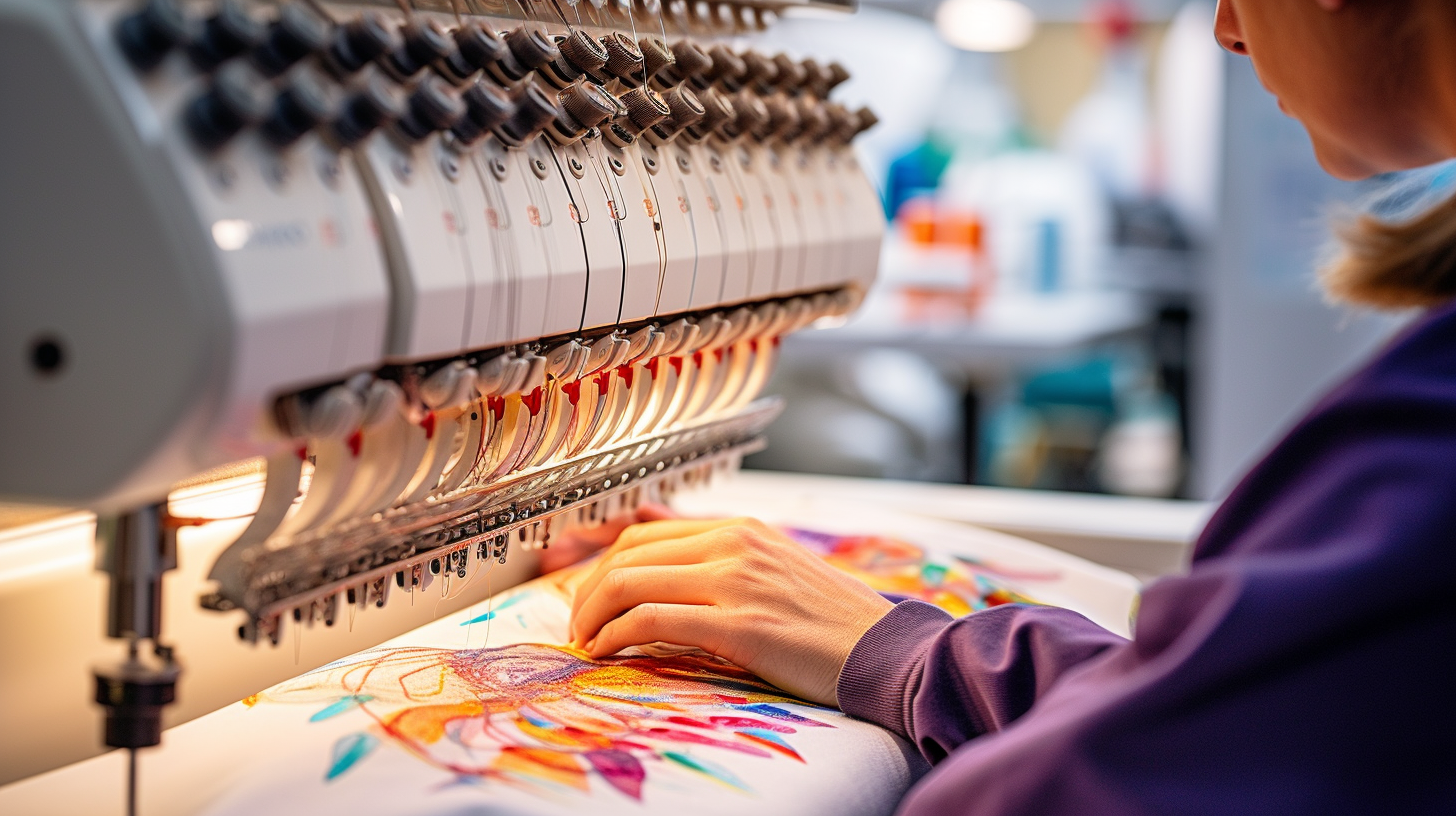Efficient Digitizing for Embroidery: Quick Turn-around
Efficient Digitizing for Embroidery: Quick Turn-around
Blog Article
Grasping the Needlework Digitizing Process: Your Ultimate Overview
Embroidery digitizing is a precise craft that requires precision and expertise to translate intricate styles right into digital styles for device embroidery. As artisans embark on this journey to master the embroidery digitizing process, an extensive understanding of the fundamentals sets the foundation for quality.

Understanding Embroidery Digitizing Fundamentals
Embroidery digitizing fundamentals develop the structure whereupon intricate layouts are equated right into machine-readable layouts for precise sewing. This first action in the needlework digitizing procedure is critical for ensuring that the final stitched item is a loyal depiction of the initial layout. Understanding needlework digitizing fundamentals includes understanding essential concepts such as stitch kinds, sew instructions, density, underlay, and draw compensation.
Stitch kinds play an essential function in figuring out the visual and textural outcome of the stitched style. By choosing the suitable stitch kind, whether it be satin, fill, or running stitch, digitizers can attain the preferred impact and improve the overall quality of the needlework. In addition, sew direction affects the circulation and dimension of the layout, while thickness figures out the spacing and protection of the stitches.
Furthermore, rug stitching provides security to the layout by protecting the material and preventing distortion throughout the needlework process. Draw settlement is one more vital consideration to neutralize the all-natural tendency of textile to agreement when sewn. Grasping these needlework digitizing fundamentals is essential for producing professional-quality embroidered items.
Picking the Right Digitizing Software Application
Picking the suitable digitizing software program is an important choice that considerably affects the performance and top quality of the embroidery digitizing process. Digitizing for Embroidery. When selecting the ideal digitizing software program, it is vital to take into consideration factors such as the intricacy of layouts you plan to develop, the user-friendliness of the software application, the degree of customer support provided, and the compatibility with your embroidery device
There are different digitizing software application choices readily available in the market, ranging from basic programs for beginners to advanced software for professional digitizers. Some popular choices include Wilcom EmbroideryStudio, Hatch Embroidery Software, and PulseID. These software packages offer a variety of devices and functions to help you develop complex layouts easily.
Before making a decision, it is recommended to explore the different software alternatives with complimentary trials or demos to identify which one best suits your demands. Furthermore, checking out reviews and looking for suggestions from skilled digitizers can offer valuable understandings into the strengths and weak points of each software (Digitizing for Embroidery). By thoroughly assessing your requirements and contrasting the functions of different digitizing software program, you can make an educated choice that boosts your embroidery digitizing operations
Digitizing Tools and Strategies

Optimizing Style Settings for Embroidery
Grasping the complexities of design settings is fundamental in achieving optimal cause the needlework digitizing procedure, structure upon the structure laid by recognizing digitizing devices and strategies. When maximizing style settings for embroidery, it is necessary to think about elements such as stitch type, thickness, padding, draw payment, and registration. Stitch kind option influences the More about the author total look and feeling of the style, with choices like satin, fill, and running stitches offering different appearances and impacts. Thickness refers to the spacing and thickness of stitches, affecting the style's insurance coverage and toughness. Proper padding sewing offers security and prevents textile distortion, particularly for complicated layouts or on elastic materials. Draw compensation readjusts for fabric stretch throughout stitching, guaranteeing accurate layout replication. Enrollment settings straighten different components of the style accurately, keeping general design honesty. By fine-tuning these design setups, embroiderers can enhance the top quality and precision of their stitched creations.

Troubleshooting Common Digitizing Issues
When running into common digitizing concerns during the embroidery procedure, it is vital to recognize the source and execute reliable solutions immediately. One usual problem is stitch thickness concerns, where stitches may be also thick, causing the textile to pucker, or as well thin, leading to spaces in the layout. Adjusting the stitch density setups in the digitizing software can help solve this concern.
Another regular obstacle is thread breaks throughout the embroidery procedure. This can take place because of numerous reasons such as wrong tension setups, dull needles, or making use of low-quality thread. Making sure correct maintenance of the embroidery maker, consisting of normal needle adjustments and tension adjustments, can lessen the event of string breaks.
Furthermore, style enrollment errors can lead to misaligned elements within the needlework design. Checking the design alignment in the digitizing software application and making essential changes before stitching can you could try these out help in avoiding this issue. By dealing with these typical digitizing problems promptly and effectively, you can guarantee a smoother needlework procedure and top quality completed products.
Verdict
Finally, understanding the embroidery digitizing process needs a solid understanding of the basics, the best choice of software, and knowledge of devices and strategies. Optimizing layout settings and repairing common digitizing issues are important actions in guaranteeing top notch needlework outcomes. By following these actions faithfully, one can accomplish precision and efficiency in the digitizing procedure.
Report this page